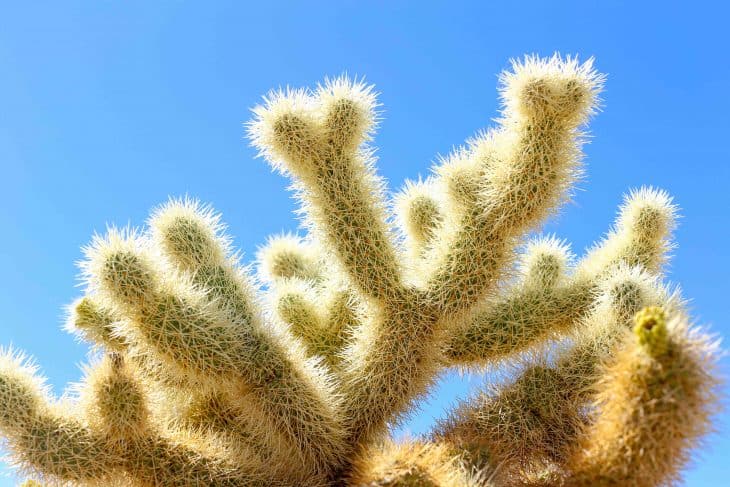
The jumping cholla is a beautiful, big cactus found in the Sonoran Desert. Now, despite its magnificent beauty, people will be surprised about the fact that this plant has a nasty side. Its barbed cactus spines would attach to people and animals coming too close resulting in a common painful reaction. Known to flourish in the very harsh environment of the desert, this plant has developed a wonderful adaptation to protect itself from hungry plant-eaters. The jumping cholla can symbolize the strive for survival and staying strong even when facing hard challenges in life. Listed below are our informative and entertaining facts about this awesome plant that will surely be worth your time.
- Cylindropuntia fulgida is a cholla cactus native to Sonora and the Southwestern United States.
- In the Southwestern United States, the range extends into the Colorado Desert of California, and in Arizona.
- Cylindropuntia fulgida grows at elevations ranging from 300 to 1,000 m.
- The jumping cholla is an arborescent tree-like plant with one low-branching trunk.
- It often grows to heights of 4 m (13 ft), with drooping branches of chained fruit.
- They have 6 to 12 spines that grow from each areole.
- They have a 2-3 cm silvery-yellow spike that covers their branch. The spikes would darken to a gray color with age.
- The jumping cholla blooms from February to March.
- Their flowers are yellow-greenish in color and would appear at the end of the branches.
- Its spine becomes rough and scaly with age.
- The fruit of these plants are fleshy, pear-shaped to nearly round, wrinkled with a few spines. They are usually sterile.
- Its name is pronounced as the Jumping “Choy-a”.
- The name, jumping cholla comes from the ease with which the stems detach when brushed.
- The jumping cholla is very sensitive to touch. A person can get bits of cactus hanging on their clothes without even knowing it.
- Usually, the ground of a mature plant will be covered with its dead stems. Young plants would start to grow from stems that have fallen from the adult plant.
- Jumping chollas live for decades in the wild.
- The fruit of a jumping cholla represents an important source of food and water for deers and bighorn sheep during long periods of drought.
- Jumping chollas usually produce sterile fruit. The plant often propagates via parts of the stem.
- People would use its wood for making handicrafts.
- They have a dense spiny coat that acts like a shield that prevents overheating and hungry herbivores at a safe distance.
Was this page helpful?
Our commitment to delivering trustworthy and engaging content is at the heart of what we do. Each fact on our site is contributed by real users like you, bringing a wealth of diverse insights and information. To ensure the highest standards of accuracy and reliability, our dedicated editors meticulously review each submission. This process guarantees that the facts we share are not only fascinating but also credible. Trust in our commitment to quality and authenticity as you explore and learn with us.
